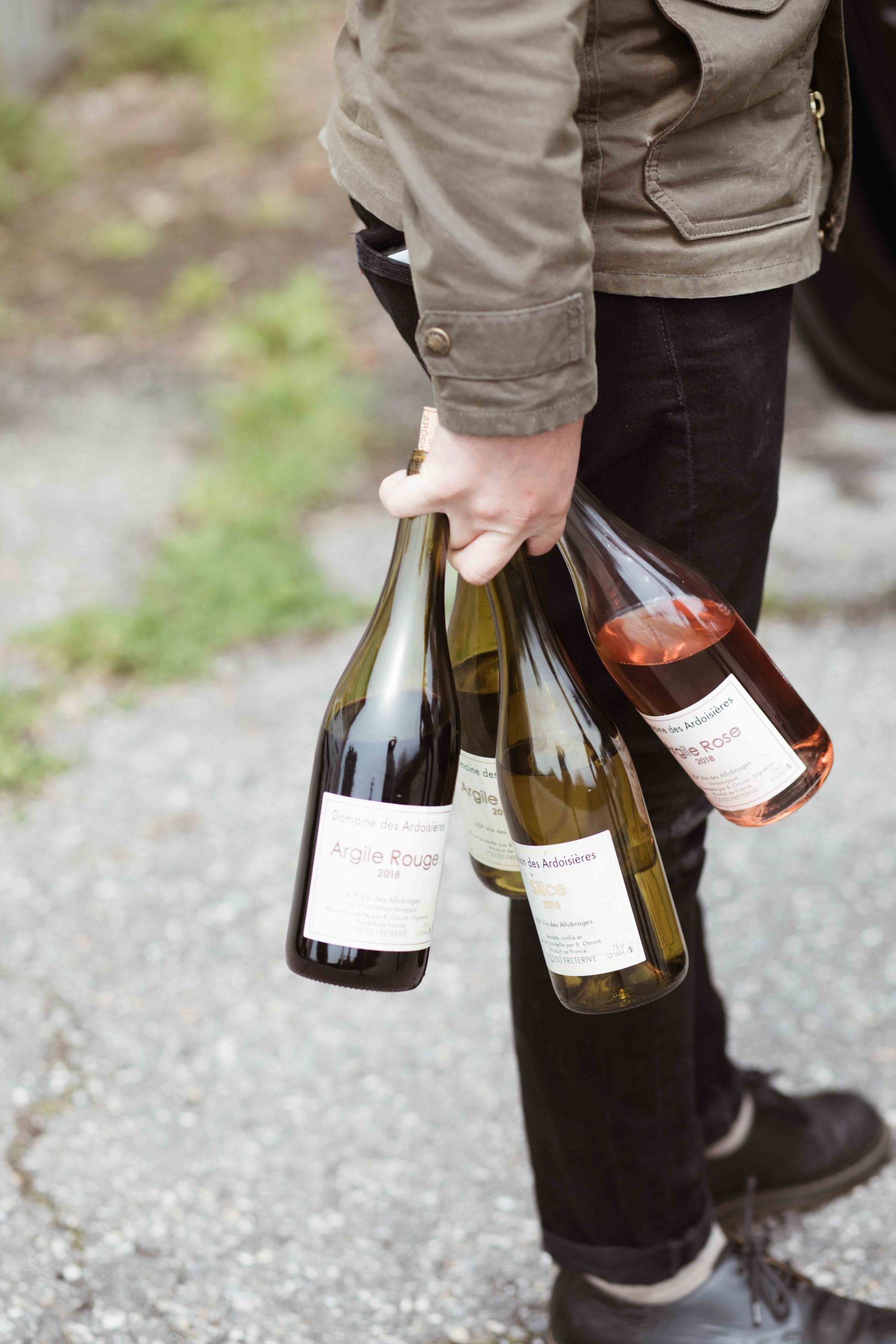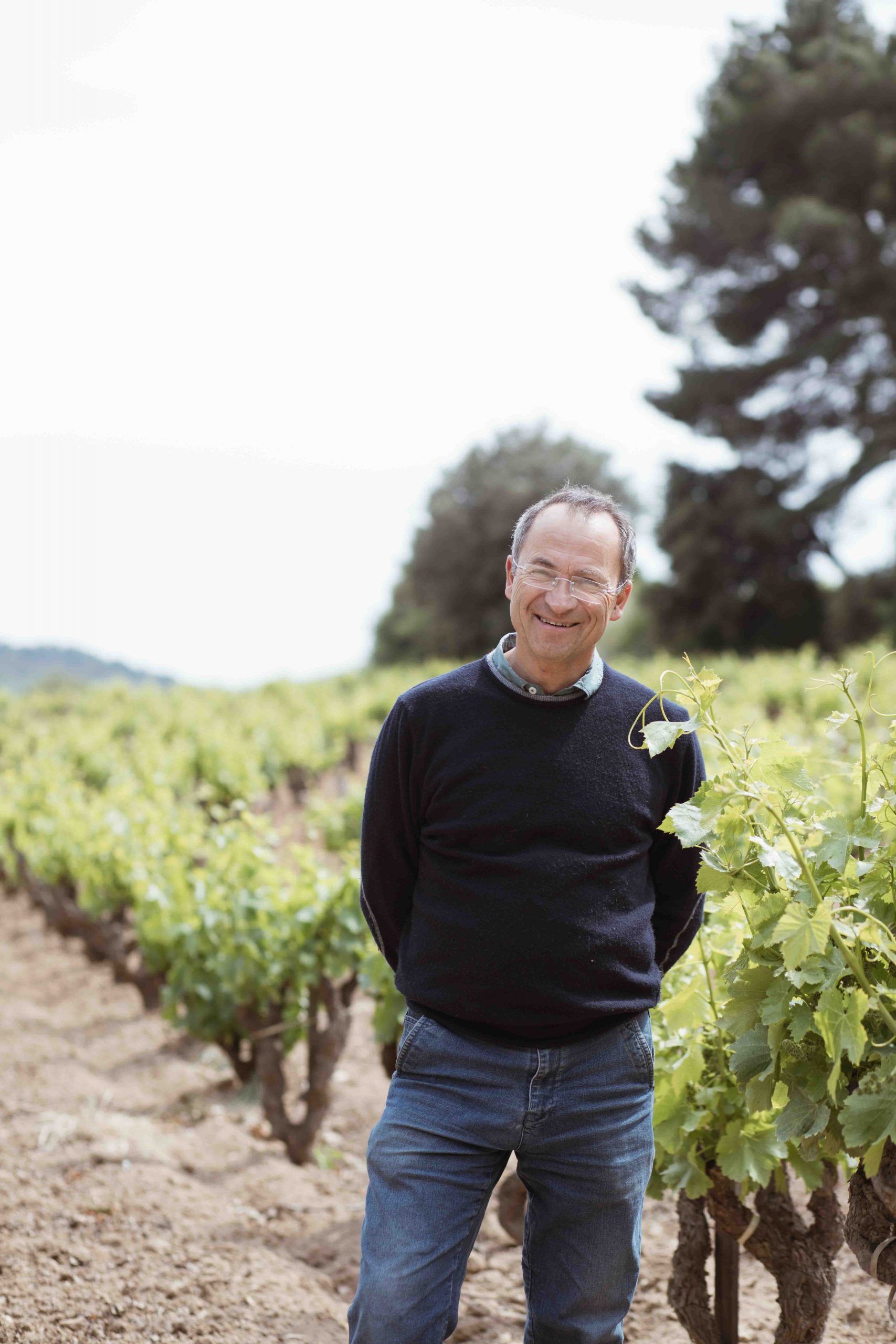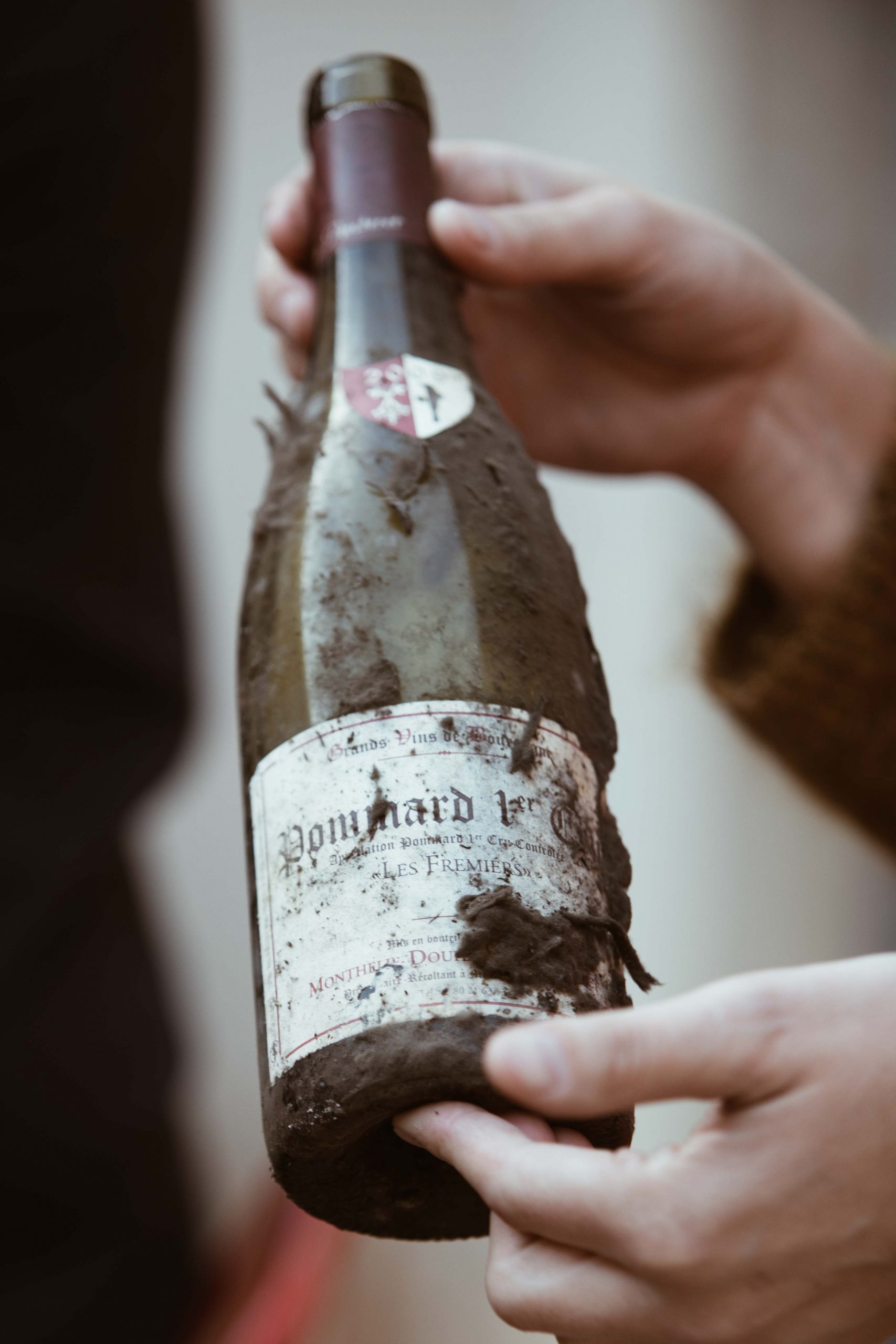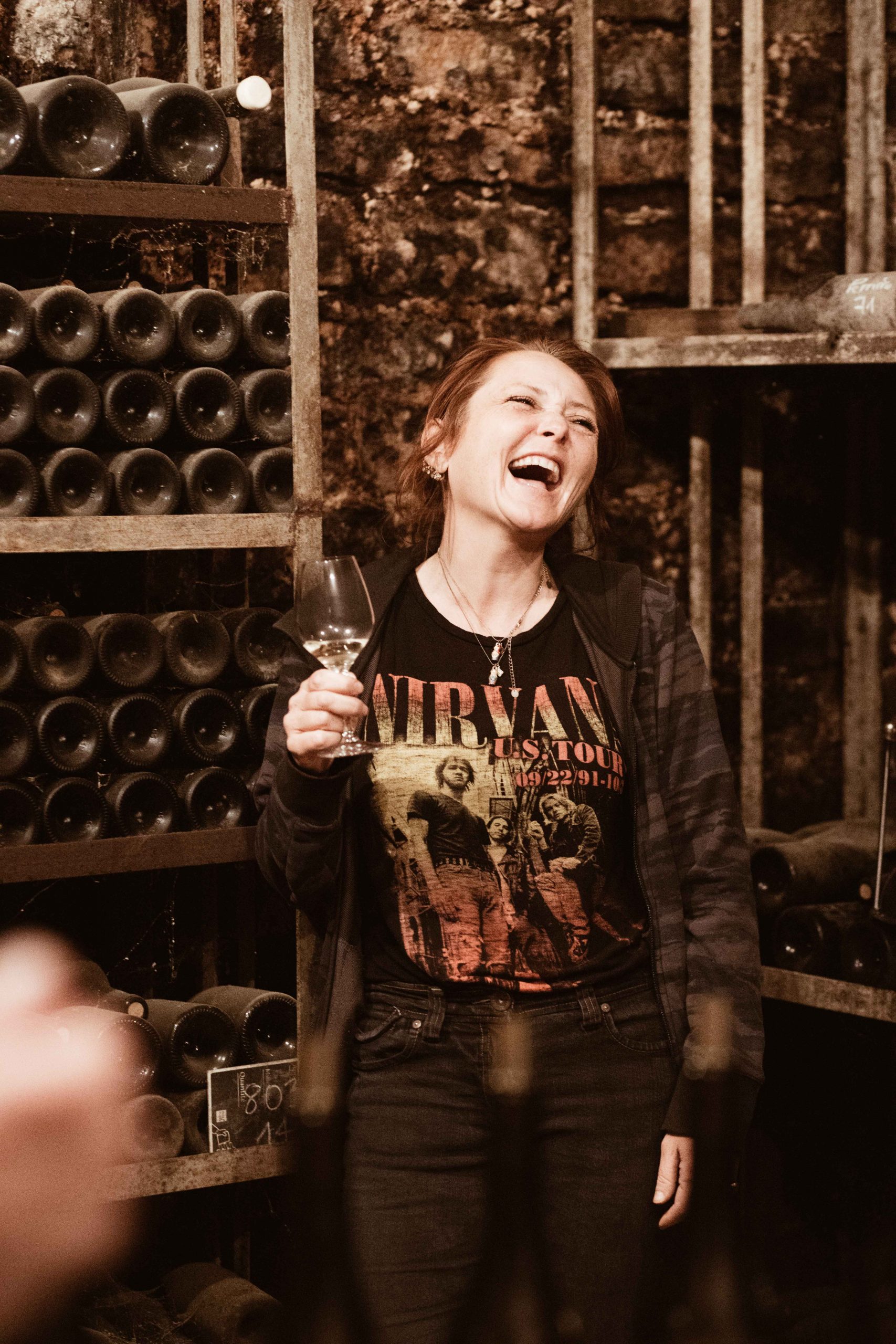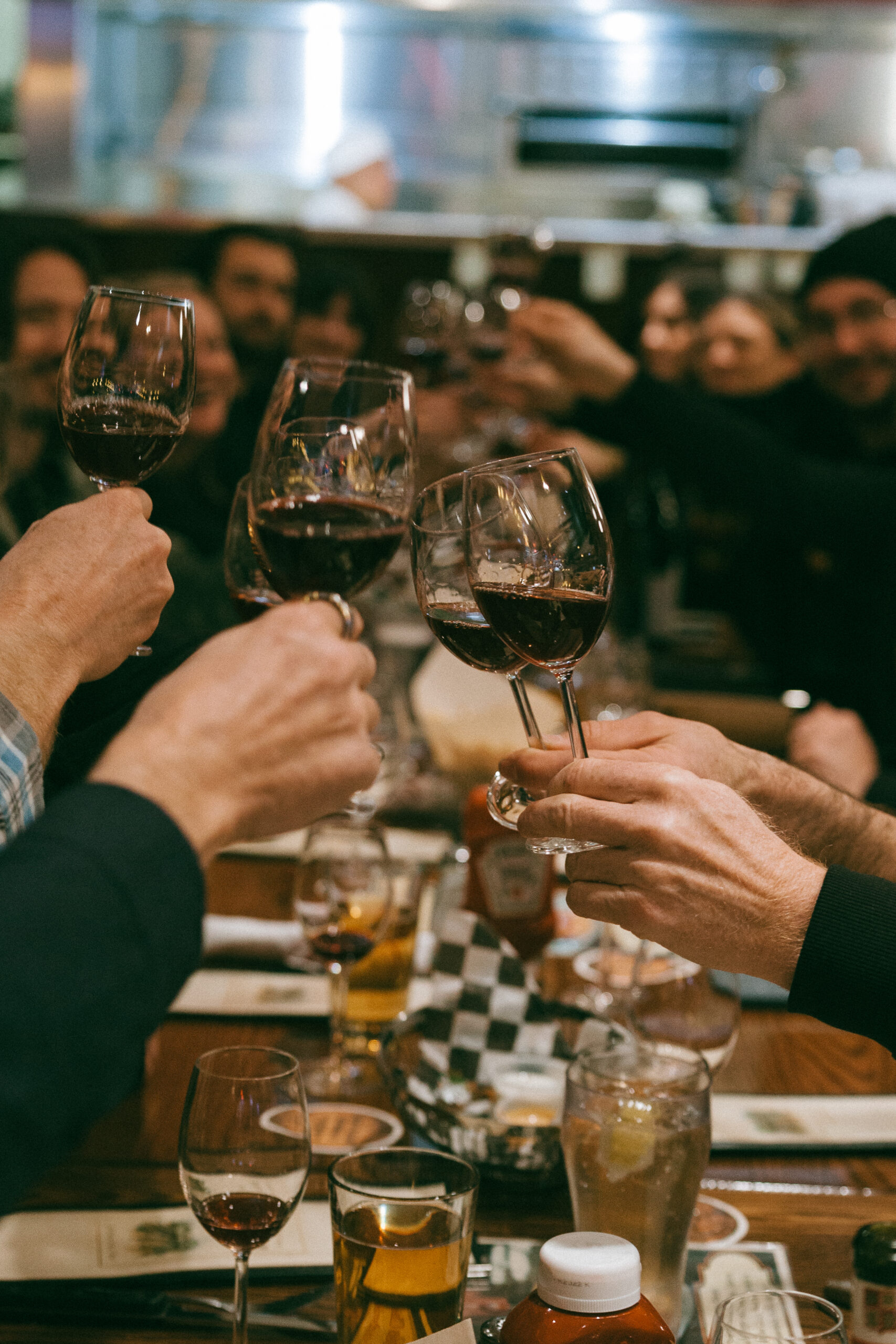Following six months of constant rain, cool weather and a wet Spring, the vines started to grow rapidly in May and blossomed in mid-June. July was wet and August stormy with, at times, very warm temperatures reaching 100°F.
A terrible hail storm mostly localized in Volnay but also affecting adjacent Monthélie and Meursault, devastated most of the vineyards. Depending on their location, some bunches were severely bruised. The rest of Côtes-de-Beaune and Côtes-de-Nuits were without major incident and, because a lot less rain fell in the Gevrey-Chambertin area, the condition of the grapes was clearly much healthier.
From the beginning of September until September the 20th, the temperature became very cool, ranging from 5°- 8° centigrade early in the morning to no more than 15°- 18° during overcast afternoons. As a result, in vineyards not properly pruned, the maturity was greatly slowed down, resulting in underipe grapes and tough skins.
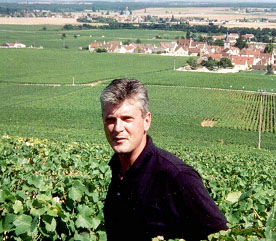
Christophe Perrot-Minot
Escorted by Christophe Perrot-Minot who owns a fair amount of Grands Crus such as Chambertin, Mazoyères, Charmes-Chambertin, and Premiers Crus in Chambolle-Musigny, Vosne-Romanée Beaux-Monts and Nuits-St-Georges Richemone, I visited a few vineyards before harvest. I did the same with Denis Mortet, tramping through his lots in Chambertin, Lavaux-St-Jacques and Les Champans.
It was very obvious that their vineyards were extraordinarily well maintained. They had done green harvest earlier in August and removed the leaves to promote ripeness and avoid rot. You could see the difference between theirs and other vineyards that had done very little maintenance: there were far too many clusters and some had rot and were unripe. The soil was dense, not ploughed. Tasting the grapes from those vineyards showed a clear difference in taste: sour, unripe, no concentration of flavor, whereas the grapes from Perrot-Minot and Denis Mortet, even at an early stage of ripeness at the end of August, already showed sweetness and flavor. Elsewhere, I was struck by the large quantity of bunches on the poorly maintained vines. I also noticed that grapes had very thick skins, all around, which meant that they would not break easily in case of rain.
A lot of vignerons have vineyards that are 40 to 60 years old. Nevertheless, they have replanted some of them. The trend is to go back to “selection massale” but it will take years, even a generation, to rebuild a vineyard, getting away from clones. When you sort out grapes on a table de tri (triage table), you have a few baskets of perfectly healthy, small clusters with millerandage and there are a few larger clusters that have to be sorted out because of unripeness on one side or a bit of rot in the middle.
In the Côte d’Or, the “Ban des Vendanges” was proclaimed on September 15th, 2001. However, Beaujolais and Mâcon had started harvesting a week earlier. Beaujolais had some rain and serious rot. Mâcon had much less. In fact, wineries that started harvesting the week before the devastating rain of Sunday, September the 23rd, made excellent, superlative, rich, balanced Beaujolais Blancs, Mâcons and Pouilly-Fuissés with a natural alcoholic content of 12.5° to 13°. Such is the case for Dominique Cornin of Domaine de Lalande. Dominique is the grape grower for the Hospices de Beaune Pouilly-Fuissé vineyard.

Denis Mortet – The “Master” Directs
Lalou Bize-Leroy of Domaine Leroy started her harvest on September 15th with a team of 95 harvesters (most of them Italian). Fearing the rain, she got in as much as she could in one day.
On Sunday, September the 23rd, when I woke up in Mâcon, the rain was literally pouring. I immediately called Lalou and learned that not a drop was falling in Vosne-Romanée. Driving north towards Beaune, one could hardly see on the freeway, but by Châlon-Nord, not a drop was falling. I stood at her table de tri with twenty other people. By the time the bunches reached the end of the conveyer belt, there was not a single underipe, overipe, dried up or rotten grape in sight and every little stem sticking out was removed! It is a small harvest, of course, since most of the vineyards are over 60 years old. Around 3 p.m that afternoon, it started drizzling but the Richebourg, Romanée-St-Vivant and most of the Clos Vougeot were in. The next day, the sun was radiantly shining. I sampled both the Romanée-St-Vivant and Richebourg clusters—you could taste the difference!

Denis Mortet’s Perfect Clusters
On Monday, September the 24th, I reported at Monthélie-Douhairet. André Porcheret was adding an extra piece of metal to his triage table to have the detached, damaged clusters of his Volnay-Champans fall into a different container while the good ones were falling into the destemmer. The sanitary conditions of Volnay were, of course, less than good, but still there was some good, healthy bunches and we saved the vintage by carefully sorting out each one.
On Tuesday, September the 25th, I went to Henri Jayer’s winery—sorting out the grapes for my all-time favorite wine, his Cros-Parantoux. Ten percent of the harvest unripe and rotten bunches were thrown out. His old vines produced spotless bunches with millerandage. I even took a picture of two perfectly shaped bunches. While we were busy sorting out the grapes under Henri’s scrutinous look, he was checking the alcoholic content which averaged 11.5° to 12.5° with great acidity and very good pH.
On Wednesday, September the 26th, I went to visit Perrot-Minot and Domaine Bertagna. Quite happy with their harvest and also sorting grapes to remove the undesirable ones.
On Thursday, September the 27th, Denis Mortet was in the middle of his Lavaux-St-Jacques vineyard, ordering his thirty vendangeurs around. The weather was fabulous. The bunches were impeccable with very little to remove from the triage table.
Gevrey-Chambertin definitely was priviledged this vintage. They had absolutely no rain and, with the extra meticulous care in the vineyards, Gevrey should be the Côtes-de-Nuits star of the 2001 harvest. This is the village where growers have been conscious of the importance of vineyard management. Competition is high between growers.

Henri Jayer – The Wine “God”
Talking to Henri Jayer, it seems that every year we now run into this problem of over production. In 1999 and 2000 the crop was also very large. According to him, the introduction of new clones over 20 years ago, particularly the “Plant Droit,” is responsible. His grand-father was producing 15 hectoliters per hectare on a good vintage, 10 was average. Green harvest and de-leafing are the two remedies to control quantity and promote quality. A few days later, Henri Jayer, still very humble and careful in his appraisal of his own crop, saw
that the color was good and his Echezeaux and Vosne had such an intense aroma that you could smell it from the street!
An important factor in the quality of the wine is the real care that everyone takes in cleaning every basket, once emptied on the triage table. They are hosed down, Mortet even has a machine to do it. They go back to the vineyard, spotless. No oxydation will occur. The floor is also hosed down everytime a new load is brought over. But the most important tool of the harvest is definitely the table de tri. Sadly, only 5 tables de tri are reported in Vosne-Romanée. Yet, here is a vintage that was unequivocably saved by it in Côtes-de-Beaune and lower part of Côtes-de-Nuits.
Very satisfied, as all of my growers are, we will see some exceptional wines in 2001. Quantity and quality are well matched for the ultimate superstars and new coming star vignerons! I cannot wait to taste the wine in the Spring!
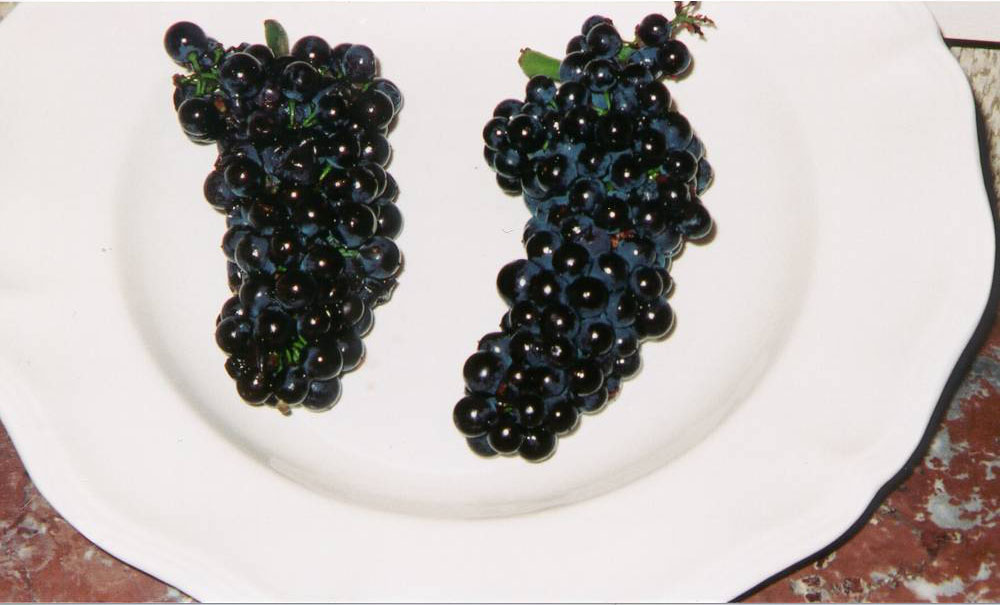
Henri’s Perfect Millerandage Grapes

